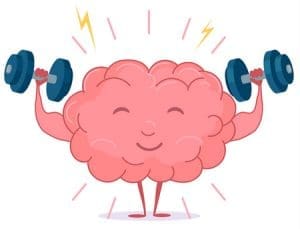IIt’s been half a year now. You still struggle with the episodes, yet you’re beginning to feel secure enough to explore them. “I have to say, it’s intriguing. Why does my brain do this?” Derealization and depersonalization: the feeling of insanity – let’s delve into it.
The mind may be signaling, ‘Okay, things are getting a bit too much up here. So to prevent a lot of stress, I’m going to activate a filter. Hang in there, we’ll be alright.’
Indeed, derealization and depersonalization can be incredibly frightening.
However, like many signs of emotional and mental challenges, understanding, effort, and patience can be incredibly beneficial.
By the way, have you experienced these episodes?
Introduction
It’s been a fortnight since we kicked off this three-part series on derealization and depersonalization (DD). This series is an update to the original one written 14 years back.
The first part shares general information about DD, the second part covers its causes, and here in the third part, we will address some curiosities, explore further, and provide tips for managing them.
In case you’re unaware: DD are generally dissociative symptoms connected to other conditions. However, the Diagnostic and Statistical Manual of Mental Disorders, Fifth Edition, Text Revision (DSM-5-TR) includes a diagnostic code for depersonalization/derealization disorder.
Let’s dive in…
Dr. V.S. Ramachandran on derealization and depersonalization
Dr. V.S. Ramachandran
During my journey of understanding my DD while contemplating graduate school, the work of neuroscientist V.S. Ramachandran, PhD captured my interest.
In his book, A Brief Tour of Human Consciousness: From Impostor Poodles to Purple Numbers, he lays out his thoughts on DD, referencing two intriguing neurological disorders.
And please, don’t freak yourself out thinking you have either of these. They’re quite rare.
Capgras syndrome (delusional belief) and Cotard’s syndrome (delusional belief)
Capgras syndrome is marked by a person believing that someone close to them, like a family member or friend, is actually an impostor. The individual recognizes their appearance and behavior but feels a disconnect regarding their emotional significance, fully aware of this inconsistency.
Cotard’s syndrome entails the patient believing they have lost everything, even parts of their body, and may think they are dead, behaving like a corpse.
Ramachandran suggests that DD could stem from similar brain circuitry alterations that give rise to Capgras and Cotard’s – even going so far as to label DD as “mini-Cotard’s.”
The two possibilities
In a life-threatening situation, a specific area in the frontal lobe known as the anterior cingulate cortex (also involved in processing physical pain) becomes active.
This action helps to dampen the brain’s fear response, which can render feelings of fear and anxiety ineffective.
Furthermore, the anterior cingulate heightens alertness as a precautionary measure for potential defense.
Consequently, we end up in an emotionally numb yet hyper-aware state.
Ramachandran proposes that we are left with two possibilities to explain our experiences: “The world simply isn’t real,” leading to derealization, or “I’m not real,” resulting in depersonalization.
Our mind as a guardian
I find all this to be incredibly captivating, especially when considering that something that feels so terrifying and could cause significant dysfunction might actually be the mind’s way of self-protection.
The mind might be communicating, “Whoa, things are getting a bit too much here. To reduce our stress, I’m activating a filter. Just hold on, everything will be okay.”

“Don’t worry, everything’s going to be alright – I’m Mighty Mind.”
To me, personifying the mind offers a gentler perspective on its distressing phenomena, making them feel less intimidating.
It’s as if the mind is this vibrant, sensitive guardian we can engage with. It’s a reciprocal relationship grounded in mutual respect.
I truly believe this is how it functions, and I think the only barrier to realizing its full two-way potential is our misunderstandings and overreacting to its natural protective instincts.
Indeed, the moment we recognize sensations like DD and the alarms go off, we often think our way into exaggerated fears and inappropriate responses. That’s what stirs up all the chaos, not the perceptual changes themselves.
Managing derealization and depersonalization
So, what steps can we take to cope with DD now and keep it from recurring?
First and foremost, we have to acknowledge DD for what they are – not Capgras, Cotard’s, or any other disorder (I’ve heard all the names).
Then, we should focus on addressing the underlying issues causing our DD – whether it’s anxiety, depression, bipolar disorder, overwhelming stress, trauma, migraines, substance use, etc. In this light, DD are symptoms, not standalone diagnoses.
During an episode, stay calm, remember your mind is looking out for you, grasp that you’re not losing your mind, and reassure yourself that it won’t last forever. And always, always move forward.
One last thing: there are medications that could be helpful: antidepressants, mood stabilizers, benzodiazepines, and atypical antipsychotics.
I’ll leave the details to you and your healthcare provider.
The saner we become
This wraps up our series. I believe it’s a crucial one, as derealization and depersonalization – often misinterpreted – can disrupt our lives significantly.
Surely, the more knowledge we acquire and apply, the more stable we’ll feel.
Once again, there’s plenty of helpful DD general information in part one, and part two dives into the causes.
In addition to finding him on YouTube and through online searches, check out Dr. Ramachandran’s publications. He is certainly a fascinating individual.
If you are interested in additional insights on emotional and mental health, take a look at the articles available by browsing through the titles or categories listed below.
Image of Dr. Ramachandran: Creative Commons Attribution 3.0, no changes made, attributed to Biswarup Ganguly.

After years of battling panic, generalized anxiety, mood fluctuations, and alcohol dependence, Bill discovered his true passion – helping those facing similar struggles. At 49, he began graduate studies and achieved his counseling credentials. He continues supporting others through Chipur and various other initiatives.


